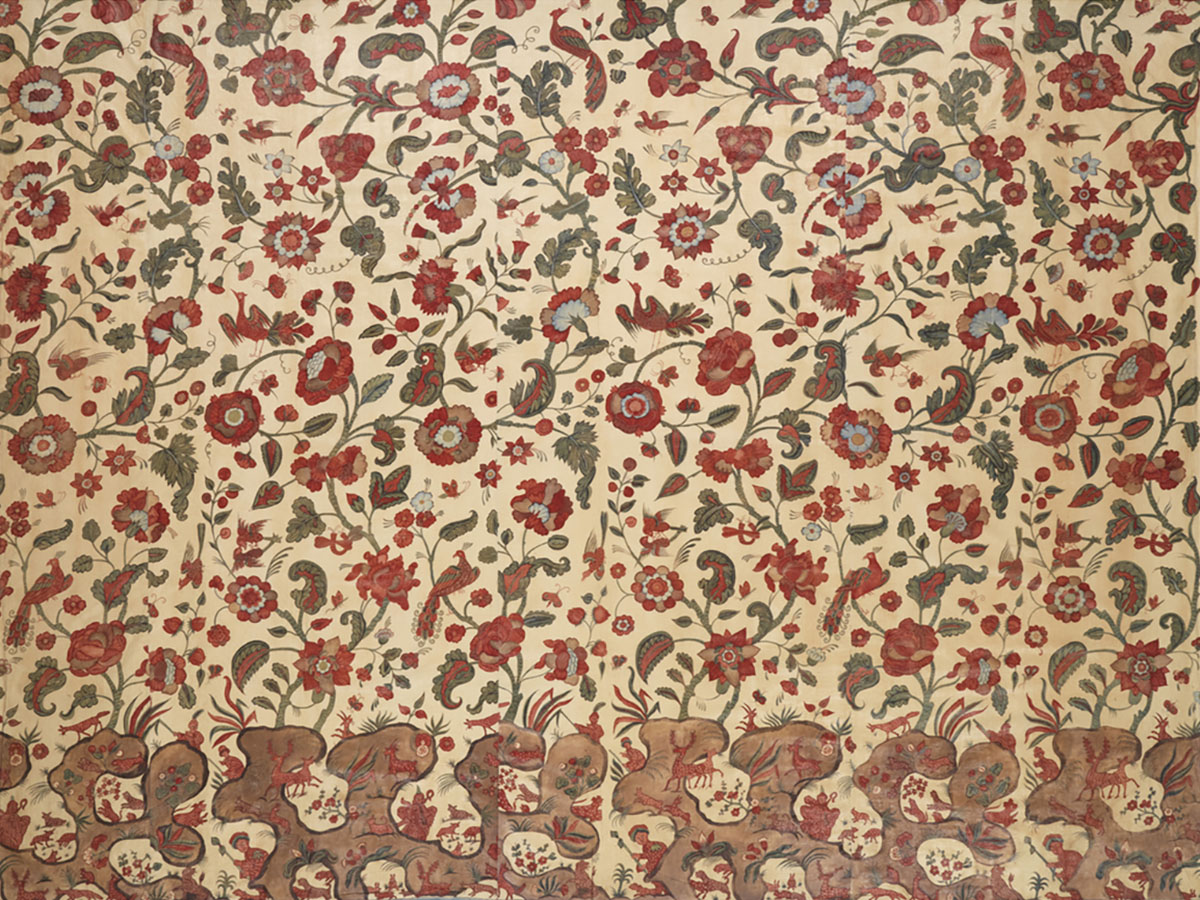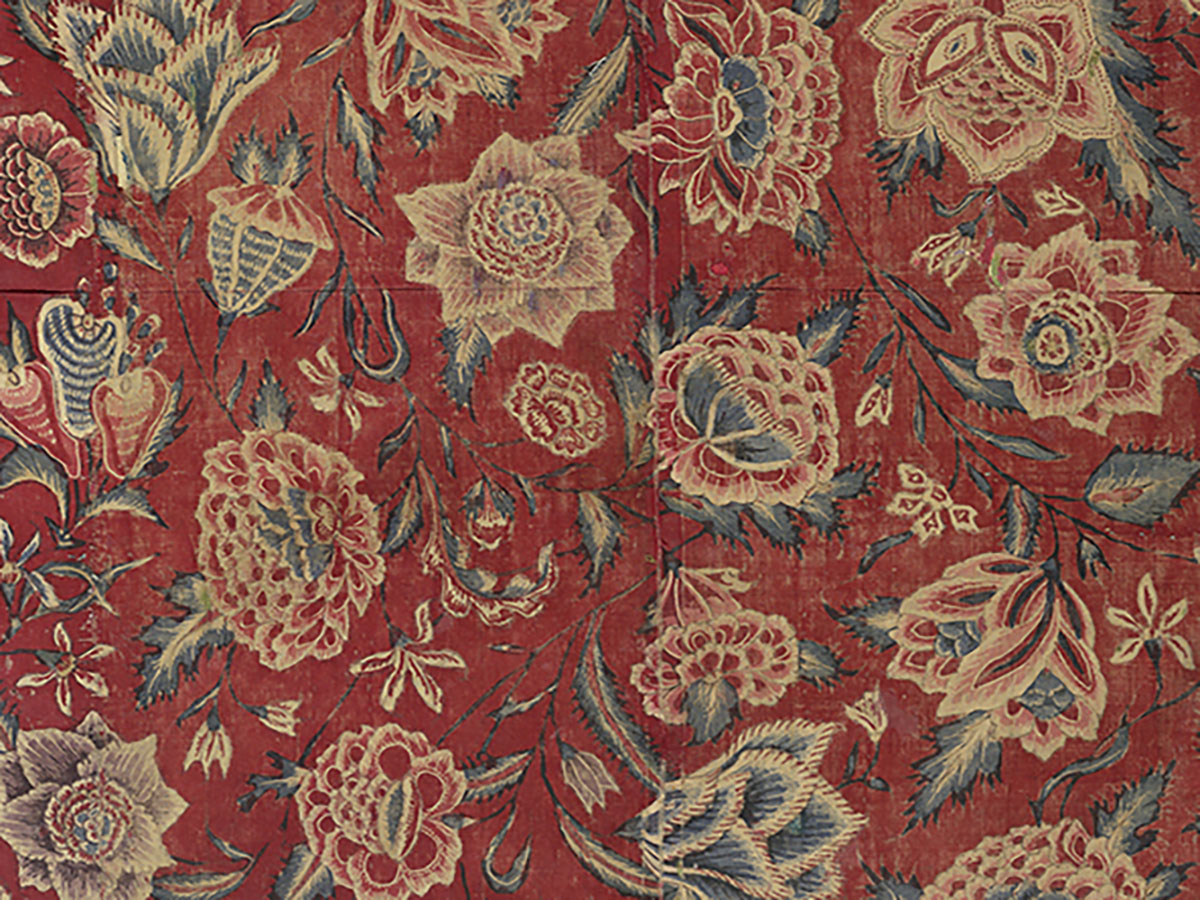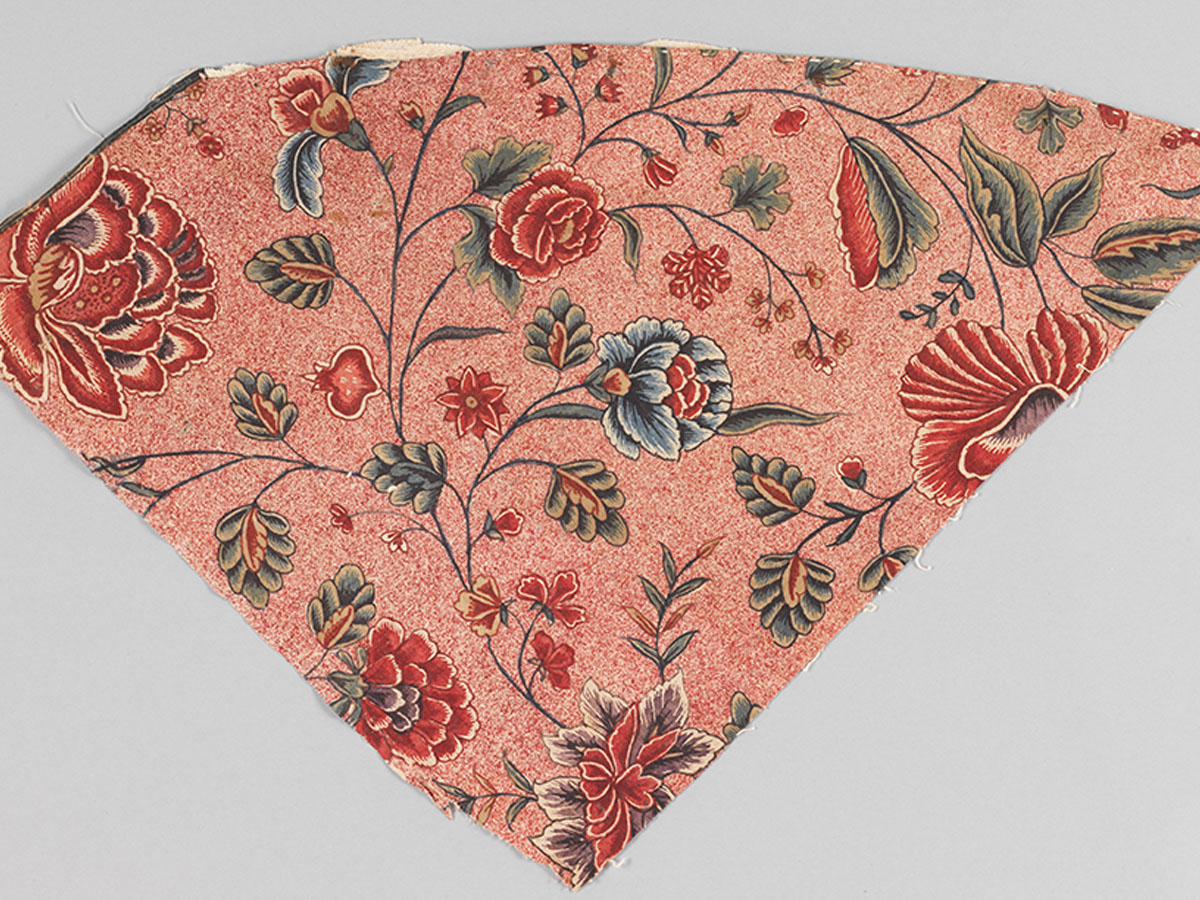ARTICLE
Chintz
Chintz was either printed or painted, with the former being done at workshops along the western coast of India, whereas the painting tradition was particular to towns such as Masulipatnam (now Machilipatnam) on the south-eastern coast. Printing was the faster method and allowed for mass production even before British control over the industry. The production of Indian chintz involved covering the cloth in resin, which helped confine the mordant to certain areas of the cloth while also brightening the colours. The resin would later be washed off before the cloth was printed or dyed, making this technique unique to Indian chintz and differentiating it from imitation chintz produced by early European manufacturers; since resin alum had to be imported to Europe at high prices, the cotton cloth printed or dyed in Europe had duller, less defined colours. After being washed, the cloth was printed using wooden blocks that had the pattern carved onto them. The block was coated evenly with dye and pressed on the fabric, with a different block used for each colour and outline.
Chintz is used extensively in upholstery and clothing. In Europe, until the nineteenth century, imported Indian chintz was the preferred cloth to make curtains, upholstery and, to a lesser extent, dresses. Some scholars believe that chintz began to be used for garments when maids were given old or damaged household textiles, which they would fashion into dresses. As chintz dresses became more fashionable, manufacturers began to sell the dull, heavier cloth for household use and a lighter, more glazed cloth to serve as clothing.
By the early nineteenth century, chintz printing and glazing were being produced in Europe with the aid of synthetic dyes, specialised machinery and systems of mass production. Owing to the ban on imported Indian cotton, cheaper British cotton began to outnumber block-printed textiles from India, and Indian exports of the fabric became limited to a small number of painted chintzes from the Coromandel coast. Today, most chintz fabrics are produced through mechanised printing, which became the norm from the late nineteenth century onwards.
Bibliography
Barnes, Ruth. Textiles in Indian Ocean Societies. RoutledgeCurzon, 2012.
Fashion Heritage. “Fascinating Textiles: The Origins of Chintz,” January 24, 2019. https://fashionheritage.eu/fascinating-textiles-the-origins-of-chintz/.
Ghose, Ruchira. Mapping Indian Textiles: Approaches to Display and Storage of Indian Textiles in Public Museums. New Delhi: Indira Gandhi National Centre for the Arts, 2017.
Kapadia, Aparna. “Chintz, Calico, Pyjamas: How India’s Indian Ocean Textile Trade Rose in the East and Set in the West.” Scroll.in, November 20, 2019. https://scroll.in/article/932429/chintz-calico-pyjamas-how-indias-indian-ocean-textile-trade-rose-in-the-east-and-set-in-the-west.
Roy, Tirthankar, and Giorgio Riello, eds. How India Clothed the World: The World of South Asian Textiles, 1500–1850. Brill Academic Publishers, 2009.
Sharma, Renu. “Symbolic Motifs in Traditional Indian Textiles and Embroideries.” International Journal of Research in Economics and Social Sciences 6, no. 3 (2016).
Varadarajan, Lotika. “Designs in Cotton: Horizons of the Past and Present.” India International Centre Quarterly 11, no. 4 (1984).
Victoria and Albert Museum. “The Fabric of India: A Global Trade,” January 11, 2016. http://www.vam.ac.uk/content/exhibitions/the-fabric-of-india/a-global-trade/.











